+ Open data
Open data
- Basic information
Basic information
| Entry |  | |||||||||
|---|---|---|---|---|---|---|---|---|---|---|
| Title | TRPV1 in nanodisc bound with PIP2-Br4 | |||||||||
 Map data Map data | ||||||||||
 Sample Sample |
| |||||||||
 Keywords Keywords |  TRPV1 in nanodisc bound with PIP2-Br4 MEMBRANE PROTEIN / TRPV1 in nanodisc bound with PIP2-Br4 MEMBRANE PROTEIN /  MEMBRANE PROTEIN MEMBRANE PROTEIN | |||||||||
| Function / homology |  Function and homology information Function and homology informationtemperature-gated ion channel activity / response to capsazepine / excitatory extracellular ligand-gated monoatomic ion channel activity / negative regulation of establishment of blood-brain barrier / sensory perception of mechanical stimulus / peptide secretion / urinary bladder smooth muscle contraction / detection of chemical stimulus involved in sensory perception of pain / cellular response to temperature stimulus / smooth muscle contraction involved in micturition ...temperature-gated ion channel activity / response to capsazepine / excitatory extracellular ligand-gated monoatomic ion channel activity / negative regulation of establishment of blood-brain barrier / sensory perception of mechanical stimulus / peptide secretion / urinary bladder smooth muscle contraction / detection of chemical stimulus involved in sensory perception of pain / cellular response to temperature stimulus / smooth muscle contraction involved in micturition /  TRP channels / cellular response to acidic pH / TRP channels / cellular response to acidic pH /  thermoception / fever generation / detection of temperature stimulus involved in thermoception / glutamate secretion / dendritic spine membrane / negative regulation of systemic arterial blood pressure / chloride channel regulator activity / response to pH / monoatomic cation transmembrane transporter activity / cellular response to ATP / response to pain / thermoception / fever generation / detection of temperature stimulus involved in thermoception / glutamate secretion / dendritic spine membrane / negative regulation of systemic arterial blood pressure / chloride channel regulator activity / response to pH / monoatomic cation transmembrane transporter activity / cellular response to ATP / response to pain /  temperature homeostasis / negative regulation of heart rate / cellular response to alkaloid / behavioral response to pain / diet induced thermogenesis / extracellular ligand-gated monoatomic ion channel activity / intracellularly gated calcium channel activity / cellular response to cytokine stimulus / negative regulation of mitochondrial membrane potential / detection of temperature stimulus involved in sensory perception of pain / calcium ion import across plasma membrane / ligand-gated monoatomic ion channel activity / monoatomic cation channel activity / sensory perception of pain / response to organonitrogen compound / temperature homeostasis / negative regulation of heart rate / cellular response to alkaloid / behavioral response to pain / diet induced thermogenesis / extracellular ligand-gated monoatomic ion channel activity / intracellularly gated calcium channel activity / cellular response to cytokine stimulus / negative regulation of mitochondrial membrane potential / detection of temperature stimulus involved in sensory perception of pain / calcium ion import across plasma membrane / ligand-gated monoatomic ion channel activity / monoatomic cation channel activity / sensory perception of pain / response to organonitrogen compound /  phosphatidylinositol binding / monoatomic ion transmembrane transport / cellular response to nerve growth factor stimulus / phosphatidylinositol binding / monoatomic ion transmembrane transport / cellular response to nerve growth factor stimulus /  phosphoprotein binding / calcium ion transmembrane transport / microglial cell activation / phosphoprotein binding / calcium ion transmembrane transport / microglial cell activation /  calcium channel activity / lipid metabolic process / response to peptide hormone / cellular response to growth factor stimulus / positive regulation of nitric oxide biosynthetic process / calcium ion transport / transmembrane signaling receptor activity / cellular response to heat / cellular response to tumor necrosis factor / positive regulation of cytosolic calcium ion concentration / response to heat / calcium channel activity / lipid metabolic process / response to peptide hormone / cellular response to growth factor stimulus / positive regulation of nitric oxide biosynthetic process / calcium ion transport / transmembrane signaling receptor activity / cellular response to heat / cellular response to tumor necrosis factor / positive regulation of cytosolic calcium ion concentration / response to heat /  postsynaptic membrane / protein homotetramerization / postsynaptic membrane / protein homotetramerization /  calmodulin binding / neuron projection / positive regulation of apoptotic process / external side of plasma membrane / neuronal cell body / calmodulin binding / neuron projection / positive regulation of apoptotic process / external side of plasma membrane / neuronal cell body /  dendrite / negative regulation of transcription by RNA polymerase II / dendrite / negative regulation of transcription by RNA polymerase II /  ATP binding / ATP binding /  membrane / identical protein binding / membrane / identical protein binding /  metal ion binding / metal ion binding /  plasma membrane plasma membraneSimilarity search - Function | |||||||||
| Biological species |   Rattus norvegicus (Norway rat) Rattus norvegicus (Norway rat) | |||||||||
| Method |  single particle reconstruction / single particle reconstruction /  cryo EM / Resolution: 2.4 Å cryo EM / Resolution: 2.4 Å | |||||||||
 Authors Authors | Arnold WR / Julius D / Cheng Y | |||||||||
| Funding support |  United States, 2 items United States, 2 items
| |||||||||
 Citation Citation |  Journal: Nat Struct Mol Biol / Year: 2024 Journal: Nat Struct Mol Biol / Year: 2024Title: Structural basis of TRPV1 modulation by endogenous bioactive lipids. Authors: William R Arnold / Adamo Mancino / Frank R Moss / Adam Frost / David Julius / Yifan Cheng /  Abstract: TRP ion channels are modulated by phosphoinositide lipids, but the underlying structural mechanisms remain unclear. The capsaicin- and heat-activated receptor, TRPV1, has served as a model for ...TRP ion channels are modulated by phosphoinositide lipids, but the underlying structural mechanisms remain unclear. The capsaicin- and heat-activated receptor, TRPV1, has served as a model for deciphering lipid modulation, which is relevant to understanding how pro-algesic agents enhance channel activity in the setting of inflammatory pain. Identification of a pocket within the TRPV1 transmembrane core has provided initial clues as to how phosphoinositide lipids bind to and regulate the channel. Here we show that this regulatory pocket in rat TRPV1 can accommodate diverse lipid species, including the inflammatory lipid lysophosphatidic acid, whose actions are determined by their specific modes of binding. Furthermore, we show that an empty-pocket channel lacking an endogenous phosphoinositide lipid assumes an agonist-like state, even at low temperature, substantiating the concept that phosphoinositide lipids serve as negative TRPV1 modulators whose ejection from the binding pocket is a critical step toward activation by thermal or chemical stimuli. | |||||||||
| History |
|
- Structure visualization
Structure visualization
| Supplemental images |
|---|
- Downloads & links
Downloads & links
-EMDB archive
| Map data |  emd_41873.map.gz emd_41873.map.gz | 258.9 MB |  EMDB map data format EMDB map data format | |
|---|---|---|---|---|
| Header (meta data) |  emd-41873-v30.xml emd-41873-v30.xml emd-41873.xml emd-41873.xml | 15.2 KB 15.2 KB | Display Display |  EMDB header EMDB header |
| FSC (resolution estimation) |  emd_41873_fsc.xml emd_41873_fsc.xml | 14.3 KB | Display |  FSC data file FSC data file |
| Images |  emd_41873.png emd_41873.png | 88.9 KB | ||
| Filedesc metadata |  emd-41873.cif.gz emd-41873.cif.gz | 6 KB | ||
| Others |  emd_41873_half_map_1.map.gz emd_41873_half_map_1.map.gz emd_41873_half_map_2.map.gz emd_41873_half_map_2.map.gz | 254.1 MB 254.1 MB | ||
| Archive directory |  http://ftp.pdbj.org/pub/emdb/structures/EMD-41873 http://ftp.pdbj.org/pub/emdb/structures/EMD-41873 ftp://ftp.pdbj.org/pub/emdb/structures/EMD-41873 ftp://ftp.pdbj.org/pub/emdb/structures/EMD-41873 | HTTPS FTP |
-Related structure data
| Related structure data | 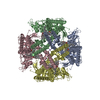 8u43MC 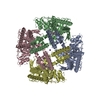 8t0cC 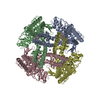 8t0eC 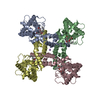 8t0yC 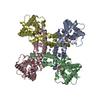 8t10C 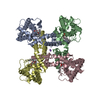 8t3lC 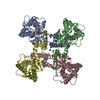 8t3mC 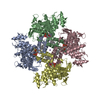 8u2zC 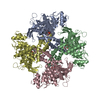 8u30C 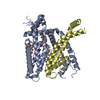 8u3aC 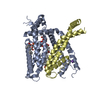 8u3cC 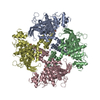 8u3jC 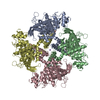 8u3lC 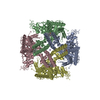 8u4dC M: atomic model generated by this map C: citing same article ( |
|---|---|
| Similar structure data | Similarity search - Function & homology  F&H Search F&H Search |
- Links
Links
| EMDB pages |  EMDB (EBI/PDBe) / EMDB (EBI/PDBe) /  EMDataResource EMDataResource |
|---|---|
| Related items in Molecule of the Month |
- Map
Map
| File |  Download / File: emd_41873.map.gz / Format: CCP4 / Size: 274.6 MB / Type: IMAGE STORED AS FLOATING POINT NUMBER (4 BYTES) Download / File: emd_41873.map.gz / Format: CCP4 / Size: 274.6 MB / Type: IMAGE STORED AS FLOATING POINT NUMBER (4 BYTES) | ||||||||||||||||||||||||||||||||||||
|---|---|---|---|---|---|---|---|---|---|---|---|---|---|---|---|---|---|---|---|---|---|---|---|---|---|---|---|---|---|---|---|---|---|---|---|---|---|
| Projections & slices | Image control
Images are generated by Spider. | ||||||||||||||||||||||||||||||||||||
| Voxel size | X=Y=Z: 0.835 Å | ||||||||||||||||||||||||||||||||||||
| Density |
| ||||||||||||||||||||||||||||||||||||
| Symmetry | Space group: 1 | ||||||||||||||||||||||||||||||||||||
| Details | EMDB XML:
|
-Supplemental data
-Half map: #2
| File | emd_41873_half_map_1.map | ||||||||||||
|---|---|---|---|---|---|---|---|---|---|---|---|---|---|
| Projections & Slices |
| ||||||||||||
| Density Histograms |
-Half map: #1
| File | emd_41873_half_map_2.map | ||||||||||||
|---|---|---|---|---|---|---|---|---|---|---|---|---|---|
| Projections & Slices |
| ||||||||||||
| Density Histograms |
- Sample components
Sample components
-Entire : TRPV1 in nanodisc bound with PIP2-Br4
| Entire | Name: TRPV1 in nanodisc bound with PIP2-Br4 |
|---|---|
| Components |
|
-Supramolecule #1: TRPV1 in nanodisc bound with PIP2-Br4
| Supramolecule | Name: TRPV1 in nanodisc bound with PIP2-Br4 / type: complex / ID: 1 / Parent: 0 / Macromolecule list: #1 |
|---|---|
| Source (natural) | Organism:   Rattus norvegicus (Norway rat) Rattus norvegicus (Norway rat) |
| Molecular weight | Theoretical: 688 KDa |
-Macromolecule #1: Transient receptor potential cation channel subfamily V member 1
| Macromolecule | Name: Transient receptor potential cation channel subfamily V member 1 type: protein_or_peptide / ID: 1 / Number of copies: 4 / Enantiomer: LEVO |
|---|---|
| Source (natural) | Organism:   Rattus norvegicus (Norway rat) Rattus norvegicus (Norway rat) |
| Molecular weight | Theoretical: 72.888227 KDa |
| Recombinant expression | Organism:   Homo sapiens (human) Homo sapiens (human) |
| Sequence | String: MGSRLYDRRS IFDAVAQSNC QELESLLPFL QRSKKRLTDS EFKDPETGKT CLLKAMLNLH NGQNDTIALL LDVARKTDSL KQFVNASYT DSYYKGQTAL HIAIERRNMT LVTLLVENGA DVQAAANGDF FKKTKGRPGF YFGELPLSLA ACTNQLAIVK F LLQNSWQP ...String: MGSRLYDRRS IFDAVAQSNC QELESLLPFL QRSKKRLTDS EFKDPETGKT CLLKAMLNLH NGQNDTIALL LDVARKTDSL KQFVNASYT DSYYKGQTAL HIAIERRNMT LVTLLVENGA DVQAAANGDF FKKTKGRPGF YFGELPLSLA ACTNQLAIVK F LLQNSWQP ADISARDSVG NTVLHALVEV ADNTVDNTKF VTSMYNEILI LGAKLHPTLK LEEITNRKGL TPLALAASSG KI GVLAYIL QREIHEPECR HLSRKFTEWA YGPVHSSLYD LSCIDTCEKN SVLEVIAYSS SETPNRHDML LVEPLNRLLQ DKW DRFVKR IFYFNFFVYC LYMIIFTAAA YYRPVEGLPP YKLKNTVGDY FRVTGEILSV SGGVYFFFRG IQYFLQRRPS LKSL FVDSY SEILFFVQSL FMLVSVVLYF SQRKEYVASM VFSLAMGWTN MLYYTRGFQQ MGIYAVMIEK MILRDLCRFM FVYLV FLFG FSTAVVTLIE DGKYNSLYST CLELFKFTIG MGDLEFTENY DFKAVFIILL LAYVILTYIL LLNMLIALMG ETVNKI AQE SKNIWKLQRA ITILDTEKSF LKCMRKAFRS GKLLQVGFTP DGKDDYRWCF RVDEVNWTTW NTNVGIINED PG UniProtKB:  Transient receptor potential cation channel subfamily V member 1 Transient receptor potential cation channel subfamily V member 1 |
-Macromolecule #2: (2S)-2-[(9,10-dibromooctadecanoyl)oxy]-3-{[(S)-hydroxy{[(1R,2R,3S...
| Macromolecule | Name: (2S)-2-[(9,10-dibromooctadecanoyl)oxy]-3-{[(S)-hydroxy{[(1R,2R,3S,4R,5R,6S)-2,3,6-trihydroxy-4,5-bis(phosphonooxy)cyclohexyl]oxy}phosphoryl]oxy}propyl (9R,10S)-9,10-dibromooctadecanoate type: ligand / ID: 2 / Number of copies: 4 / Formula: V5H |
|---|---|
| Molecular weight | Theoretical: 1.342682 KDa |
-Macromolecule #3: 1,2-DIOLEOYL-SN-GLYCERO-3-PHOSPHOCHOLINE
| Macromolecule | Name: 1,2-DIOLEOYL-SN-GLYCERO-3-PHOSPHOCHOLINE / type: ligand / ID: 3 / Number of copies: 4 / Formula: PCW |
|---|---|
| Molecular weight | Theoretical: 787.121 Da |
| Chemical component information |  ChemComp-PCW: |
-Macromolecule #4: SODIUM ION
| Macromolecule | Name: SODIUM ION / type: ligand / ID: 4 / Number of copies: 1 |
|---|---|
| Molecular weight | Theoretical: 22.99 Da |
-Macromolecule #5: water
| Macromolecule | Name: water / type: ligand / ID: 5 / Number of copies: 130 / Formula: HOH |
|---|---|
| Molecular weight | Theoretical: 18.015 Da |
| Chemical component information |  ChemComp-HOH: |
-Experimental details
-Structure determination
| Method |  cryo EM cryo EM |
|---|---|
 Processing Processing |  single particle reconstruction single particle reconstruction |
| Aggregation state | particle |
- Sample preparation
Sample preparation
| Concentration | 2.1 mg/mL |
|---|---|
| Buffer | pH: 7.5 |
| Vitrification | Cryogen name: ETHANE |
- Electron microscopy
Electron microscopy
| Microscope | FEI TITAN KRIOS |
|---|---|
| Electron beam | Acceleration voltage: 300 kV / Electron source:  FIELD EMISSION GUN FIELD EMISSION GUN |
| Electron optics | Illumination mode: SPOT SCAN / Imaging mode: BRIGHT FIELD Bright-field microscopy / Nominal defocus max: 2.0 µm / Nominal defocus min: 0.8 µm Bright-field microscopy / Nominal defocus max: 2.0 µm / Nominal defocus min: 0.8 µm |
| Image recording | Film or detector model: GATAN K3 BIOQUANTUM (6k x 4k) / Average electron dose: 45.8 e/Å2 |
| Experimental equipment |  Model: Titan Krios / Image courtesy: FEI Company |
 Movie
Movie Controller
Controller



















 Z (Sec.)
Z (Sec.) Y (Row.)
Y (Row.) X (Col.)
X (Col.)






































